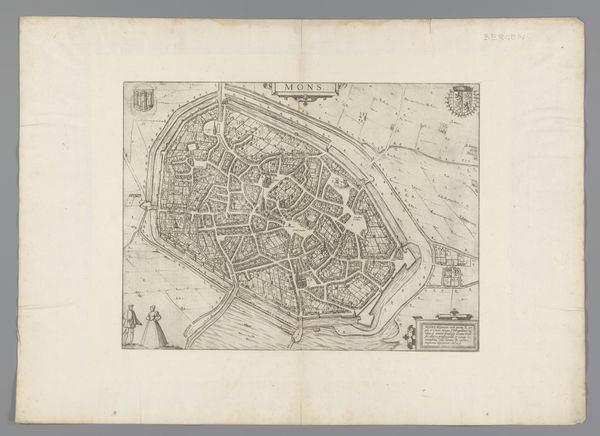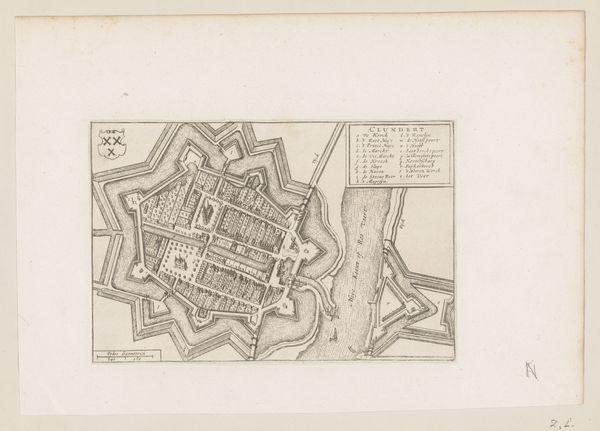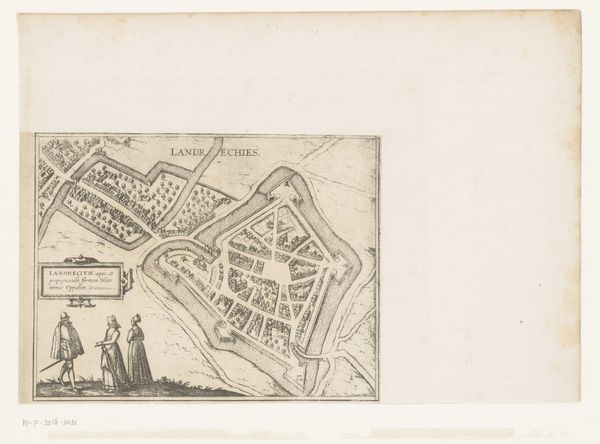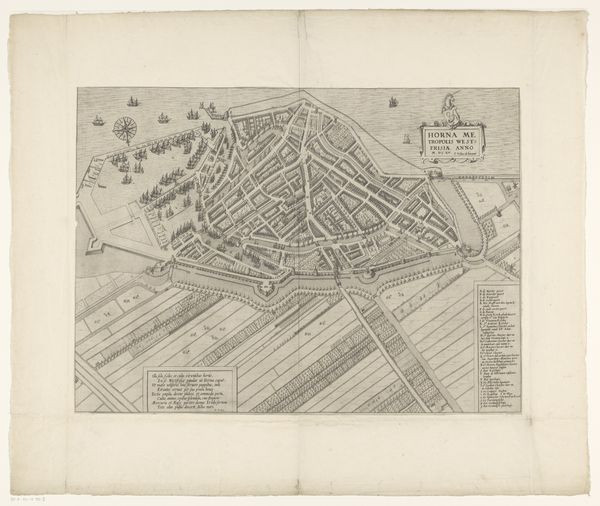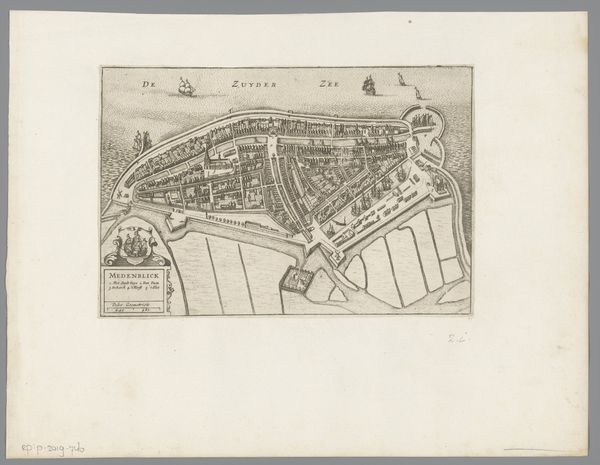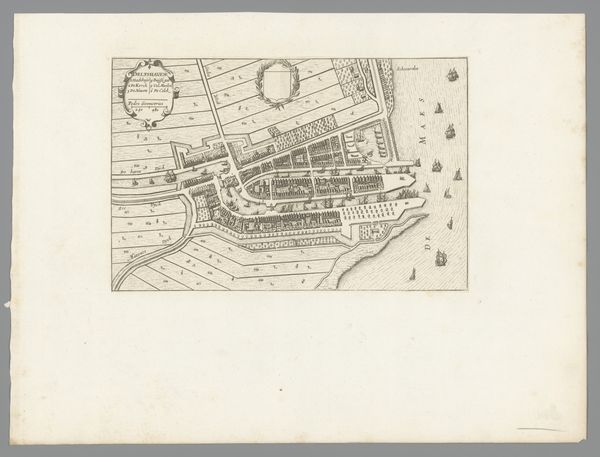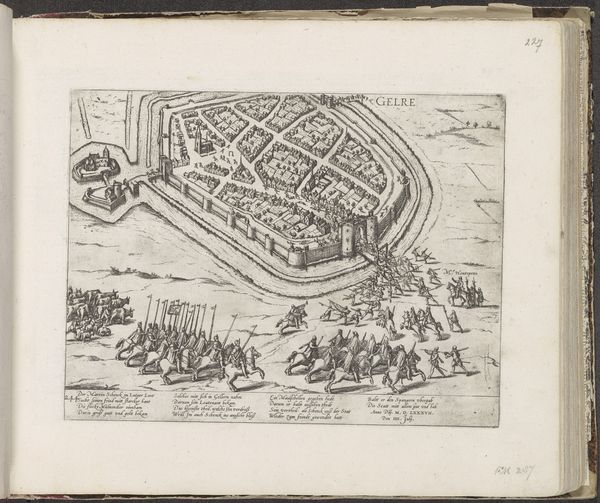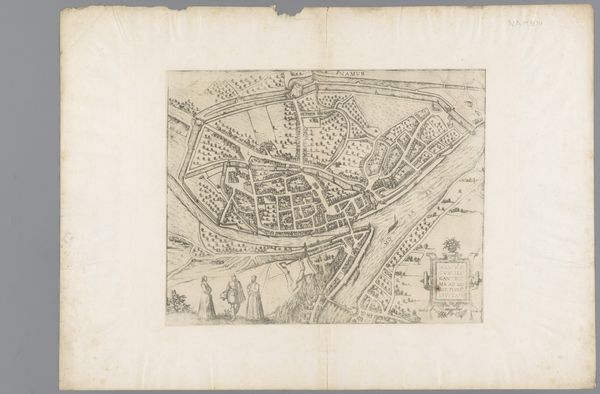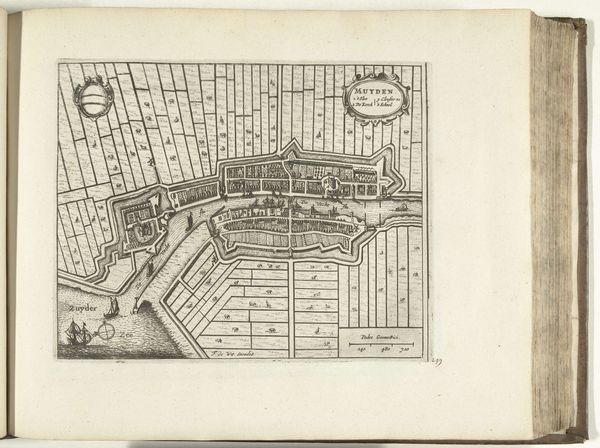
drawing, print, paper, ink, engraving
#
drawing
#
dutch-golden-age
# print
#
landscape
#
paper
#
ink
#
geometric
#
cityscape
#
engraving
Dimensions: height 147 mm, width 225 mm
Copyright: Rijks Museum: Open Domain
Curator: Looking at this incredibly detailed rendering, we have before us the “Plattegrond van Dordrecht,” dating back to 1632. The work, whose creator remains anonymous, showcases a bird's-eye view of the city rendered with ink on paper, a testament to the precision of engraving during the Dutch Golden Age. Editor: The sheer density is the first thing that strikes me. The compressed geometric forms create a mesmerizing mosaic of urban life. It has an almost unsettling flatness that feels both calculated and expressive. Curator: That unsettling flatness, as you call it, speaks to the intention of these early maps. This wasn't simply an aesthetic exercise; it was about asserting control and presenting an idealized, ordered vision of the urban space. Consider how cartography intersected with colonial expansion and governance at the time. Editor: Yes, the interplay of semiotics and urban control, using architectural forms as units of meaning… but I can't help but think of Piranesi. It may lack the dramatic chiaroscuro, but there's a similar feeling of infinite complexity embedded in the architectural rendering, of encoded meaning resisting definitive readings. Curator: Absolutely, and one cannot ignore the cultural weight such a detailed depiction would carry. Dordrecht was a vital port city, a node of economic and political power during the Dutch Republic's rise. This "Plattegrond" embodies civic pride, intended to inform and impress simultaneously. The formal, geometric structures project the city's confidence and ambition to the outside world. Editor: Right, that idealized image contrasts with the realities of early modern urban life – disease, poverty… aspects not explicitly addressed but undeniably present, lurking beneath the ordered surface. Curator: Precisely. These historical maps represent more than geographic space; they function as ideological artifacts reflecting power dynamics. By studying its forms and textures we may consider this artifact a key component of societal frameworks and historical circumstances. Editor: It invites us to look closely, to unpack the visual strategies deployed in its creation. Its austere elegance serves as an effective tool to better visualize history and understand societal control. Curator: An elegant artifact from the Rijksmuseum collection indeed.
Comments
No comments
Be the first to comment and join the conversation on the ultimate creative platform.
